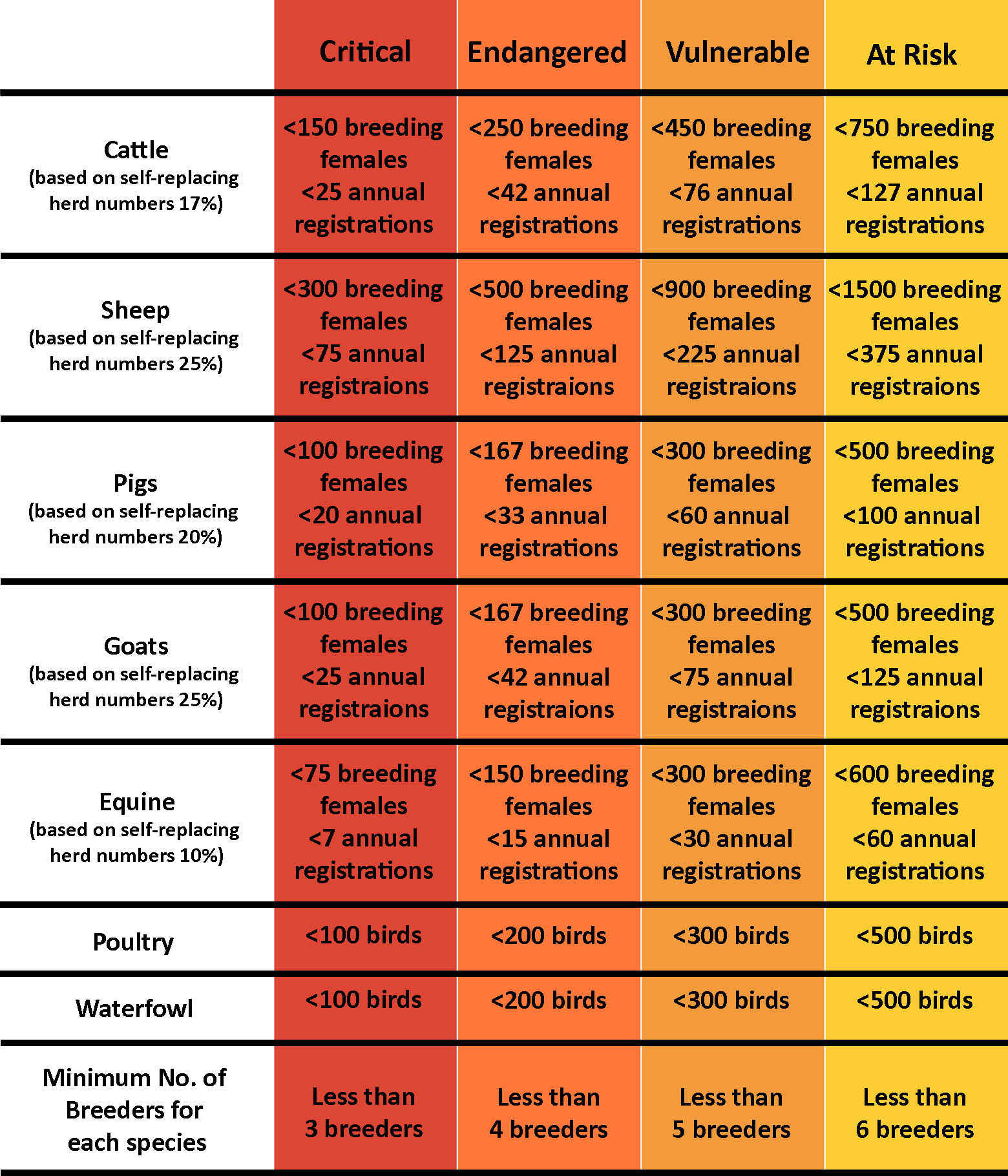
RARE BREEDS TRUST OF AUSTRALIA
powered by TidyHQGuidelines for Acceptance of Breeds
Guidelines for Acceptance of Breeds
Guidelines for Acceptance of Breeds into RBTA’s Priority List
Definition of a Breed
The breed is a true genetic breed when mated together. In other words it breeds true to type.
Why does Rare Breeds Trust of Australia only count registered animals?
Registered animals are those with documented pedigrees. Assuming that registries are operated with integrity (an assumption we make), we know registered animals to be purebred. Generally, animals that are intended as breeding stock are registered and will contribute their genes to the next generation. Historically, unregistered animals had jobs other than breeding. This makes continuity of pedigree registration from generation to generation very important. While this approach results in an under-count to varying degrees, it does consistently count those animals most likely to contribute to the next purebred generation
- Placement of a breed within Watchlist categories may not be wholly defined by registered breeding female population size (the numeric thresholds serve as a guideline).
- Population genetic factors (such as inbreeding and genetic erosion) and
- Trends in breed density and distribution (geographical concentration in a small area) can mean a breed will be highly vulnerable to disease outbreaks, and so are also included in making assessments of endangerment.
If insufficient information exists to fulfill all current guidelines, the RBTA may occasionally recognize breeds it considers to be of genetic conservation importance.
Section A: Genetic Basis
- Has the breed existed continuously for 40 years?
- Has there been an accepted Stud/Herd/Flock book for at least 6 generations, or in the case of poultry and waterfowl, is the breed recognized in the Current Australian Poultry Standard? (In the case of poultry colour variants will normally be considered as part of the same interbreeding population unless there is evidence of genetically distinct origins and these variants are not interbred)
- Have other breeds contributed less than 20 percent of the genetic makeup of the breed in the last six generations?
If the answer to 1 is affirmative, and if one of the other answers are affirmative, proceed to Section B.
If the breed does not qualify under his section, it is not accepted unless it possesses a distinct characteristic not found elsewhere.
Section B: Numerical Basis
- A breed will be included in the lists if there are fewer than the following number of breeding females in the breed: Cattle 750; Horses 600; Sheep 1500; Goats 500; pigs 500.
- Breeds with four or fewer distinct male lines will be included on the priority list. A watching brief will be kept on breeds with six or fewer distinct male lines, (A male line is one which has no ancestors in common with another in the last four generations, i.e. up to and including great grandparents.)
- Breed priorities will be set according to the table below.


